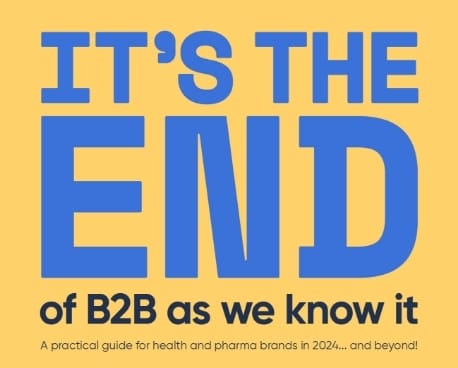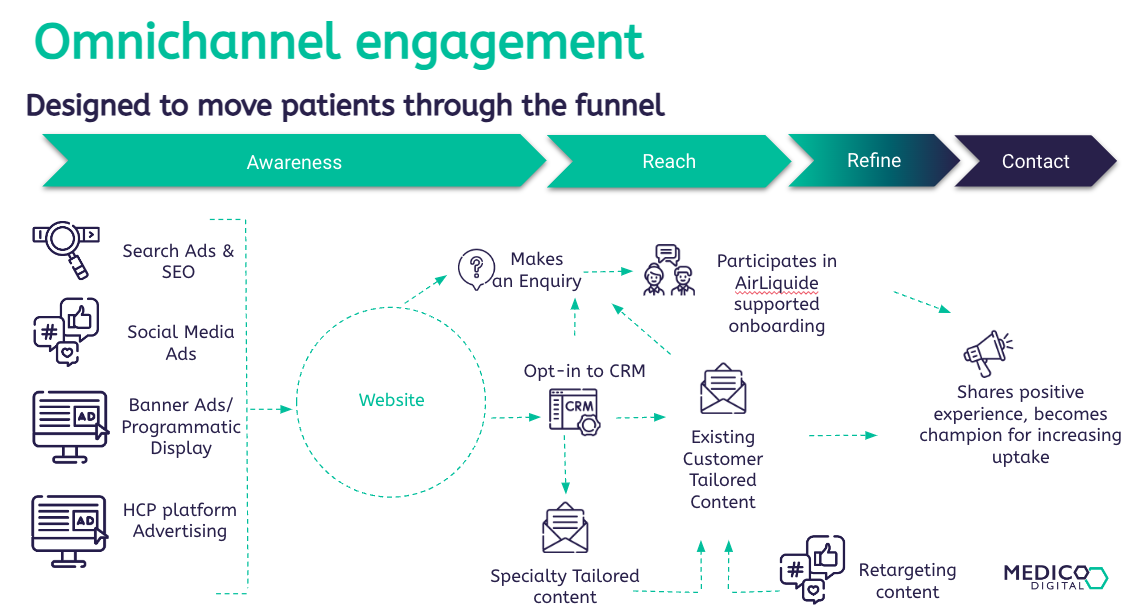In the world of digital marketing, where the healthcare landscape is rapidly evolving, understanding the challenges and realities faced by healthcare professionals (HCPs) is not just a necessity, but a critical differentiator.
Empathy: The Key to Meaningful HCP Engagement
At the core of successful engagement with HCPs lies empathy—the ability to truly understand and value their perspectives.
Lizz Summers, our Head of Brand & Marketing, sheds light on why this matters and provides practical tips for health and pharma companies to grasp the world of HCPs, crafting more compelling and efficient communications.
A Closer Look at HCP Realities
Lizz shares insights gained from more than a decade in frontline healthcare, painting a clear picture of what HCPs face:
1. Time is Precious
Every minute counts for time-strapped HCPs, facing a day-in-day-out routine of overbooked and understaffed clinics. Often they’re unable to take even a loo break, let alone a lunch break!
2. Resource Challenges
While most HCPs strive to deliver gold standard healthcare, budget and resource constraints often mean they are able to deliver only the basics. Simple provisions, such as enough computers for the number of clinicians, are often a distant dream (Lizz sellotaped her desk back together every day for a year!), leaving flashy innovation and technical advances feeling out of reach.
3. Battling Process Fatigue
The NHS’s vast scale results in layers of bureaucracy. Simple tasks can get caught up in red tape, which can be frustrating and mentally exhausting, on top of an already demanding role.
4. The Risk of Innovation
Trying new treatments, products, or approaches can be daunting when lives are at stake, and new innovations may seem riskier than sticking with the status quo. Junior clinicians often champion new approaches, but they need watertight data, rigorous business cases, and endorsements from credible Key Opinion Leaders (KOLs) to convince senior colleagues, procurement, or governing departments to give it the go-ahead.
5. Skepticism Towards Industry Claims
HCPs approach health and pharma claims skeptically, especially when fancy dinners and flashy presentations are involved. Impartiality matters, and they’re not easily swayed.
Strategies for Effective Engagement
Lizz highlights some non-negotiable principles for effective health marketing:
1. Keep it Simple and Concise
No convoluted messages or trying to be clever over clear. Keep written content short, skimmable, and written in simple language (which research shows even experts prefer). For webinars, keep it succinct, fast-paced and actionable. Provide value in the most straightforward way possible.
‘(The study) found that people with specialist knowledge had an even greater preference for plain English. This is because those with the highest literacy levels and the greatest expertise tend to have the most to read. They do not have the time to wade through pages of dry, complicated content.’ Gov.uk, 2018 (summarising Trudeau, 2012)
2. Be a Realist
Recognise that HCPs strive for excellence, even though their hands are tied by time and resources. Help bridge the gap between knowledge and action by breaking down clinical papers into bite-sized abstracts or summaries, delivering digital training, and providing practical resources to make delivering quality care easier.
3. Support Innovators
Early adopters are often the key to establishing a new treatment or product. Equip them with tools to influence their organisation, from business case templates to KOL endorsements and treatment protocols, to help bolster their efforts to bring change to established practices.
4. Be Open and Transparent
HCPs are intelligent people and will be easily alienated if they feel they are being manipulated. For Lizz, the Sales Reps she had the best relationships with were those who respected her expertise, were willing to recognise limitations in their data, spoke about their competitors with respect… and who didn’t come into the office (the one with the sellotaped desk) in designer shoes…
Empathy: The Catalyst for Impactful Engagement
Understanding the triumphs, struggles, and daily lives of your audience lays the foundation for powerful communication. Tailor your messages to resonate with them, through channels that come naturally.
In an age of impersonal interactions, empathy sets you apart. It’s not only about comprehending HCPs’ challenges but genuinely caring about their success and their influence on patient well-being. By placing empathy at the heart of your healthcare engagement strategy, you’re not just building better marketing campaigns—you’re shaping a better future for healthcare, step by meaningful step.
Sources:
The Health Foundation (2023) Innovation is being squeezed out of the NHS. [www] Available from: https://www.health.org.uk/news-and-comment/blogs/innovation-is-being-squeezed-out-of-the-nhs
Gov.Uk (2018) Plain English… Write Less, Say More. [WWW] Available from: https://companieshouse.blog.gov.uk/2018/01/10/plain-english-write-less-say-more/
Trudeau, Christopher R., The Public Speaks: An Empirical Study of Legal Communication (May 20, 2012). 14 Scribes J. Leg. Writing 121 (2011-2012), Available at SSRN: https://ssrn.com/abstract=1843415 or http://dx.doi.org/10.2139/ssrn.1843415










